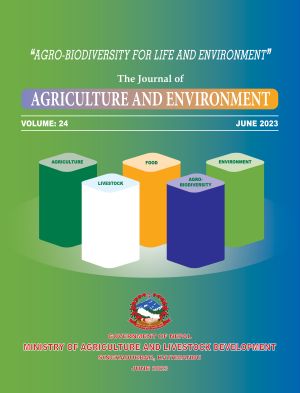Evaluation of Different Weed Management Practices on the Yield of Spring Maize in Gauradaha, Jhapa
DOI:
https://doi.org/10.3126/aej.v24i01.58177Keywords:
Plastic mulching, spring maize, weeds, yieldAbstract
Maize is more likely to have weed infestations due to its steady early growth rate and extensive row spacing, which favor weed development even before crop emergence. As a result, there prevails strong correlation between weed density and maize yield. An experiment was conducted at the Gauradaha Agriculture Campus, Jhapa, in the spring of 2022 to assess the effect of various weed control methods on maize yield. The experiment had three replications and eight treatments (control, cover crops, hand weeding at intervals of 15 days, botanical weedicides, inorganic weedicides, black plastic mulch, straw mulch, and small inter-row spacing). The number of cobs per hectare, sterility%, and shelling% were not significantly affected by various treatments. The use of black plastic mulching for weed management achieved significantly higher numbers of grain/cob (427.83), row/cob (13.40), weight of grain/cob (153.33gm), test weight, and yield (8.46t/ha). Similarly, the lowest test weight was recorded in T8 (111), i.e., the small inter-row spacing plot. While the lowest yield was observed in T4, i.e., botanical weedicides (3.20). This study found that plastic mulching had a positive impact on the majority of yield and yield-attributing indicators in spring maize, which could be helpful in weed-control strategies.




